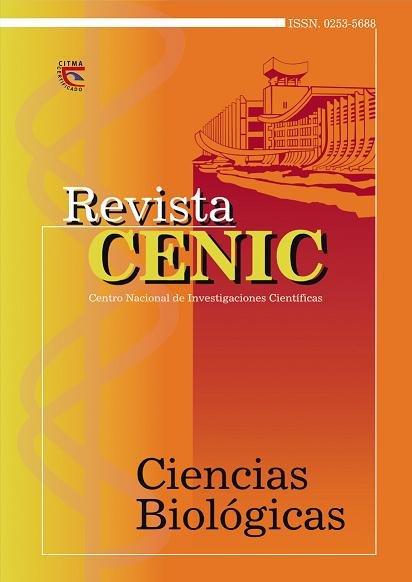Establecimiento de la técnica de Bandeo - C en clones silvestres del complejo Saccharum.
Abstract
Sugarcane is a complex hybrid of autopolyploid nature with small chromosomes (1 – 3 μm), which difficult the chromosome identification and characterization. Up to now, studies on genome structure and evolution have been mainly based on the distribution of chromosome numbers and unknow the use of chromosome banding techniques, which are very useful for individual chromosome identification and as cytogenetic markers. Giemsa C - banding technique was established in new wild clones of Erianthus genus, testing different concentrations of hydrolysis from 0,05 N HCl to 0,2 N and times from 0,5 min. to 2 min. Variants of time in Giemsa stain were evaluated from 15 min. to 1,5 hours. At last, suitable hydrolysis concentration and time were resulted of 0,1 N HCl for 1 min., as well as time of Giemsa stain of 1 hour. Centromeric, interstitial bands and combinations of centromeric with telomeric and telomeric with interstitial were observed. These bands allowed to perform genotype characterization based on banding pattern.
Downloads

Downloads
Published
How to Cite
Issue
Section
License
Copyright (c) 2003 Copyright (c) 2003 Revista CENIC Ciencias Biológicas.

This work is licensed under a Creative Commons Attribution-NonCommercial-ShareAlike 4.0 International License.
Los autores que publican en esta revista están de acuerdo con los siguientes términos:
Los autores conservan los derechos de autor y garantizan a la revista el derecho de ser la primera publicación del trabajo al igual que licenciado bajo una Creative Commons Atribución-NoComercial-CompartirIgual 4.0 Internacional que permite a otros compartir el trabajo con un reconocimiento de la autoría del trabajo y la publicación inicial en esta revista.
Los autores pueden establecer por separado acuerdos adicionales para la distribución no exclusiva de la versión de la obra publicada en la revista (por ejemplo, situarlo en un repositorio institucional o publicarlo en un libro), con un reconocimiento de su publicación inicial en esta revista.
Se permite y se anima a los autores a difundir sus trabajos electrónicamente (por ejemplo, en repositorios institucionales o en su propio sitio web) antes y durante el proceso de envío, ya que puede dar lugar a intercambios productivos, así como a una citación más temprana y mayor de los trabajos publicados (Véase The Effect of Open Access) (en inglés).














